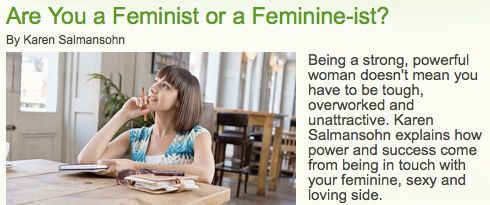In class a few weeks ago, we briefly touched on makeover shows such as
"What Not To Wear" and others in relationship to the messages about gender being sent by the media. Although I personally don't follow these shows very often, I felt I had seen enough to get a general idea of the pros and cons in terms of theme.
Tonight, however, I decided to catch a new episode of Style's
"How Do I Look?" and reached a new level of offended.

This particular episode victimized Kristen, a slender twenty-something with a penchant for tiered gypsy skirts, secondhand t-shirts, and patterned headscarves. Unlike most victims of the show, however, Kristen didn't lack style because of apathy or poor taste. To the contrary, Kristen gave up her passion for shopping when she began sponsoring impoverished children in Uganda. After meeting and falling in love with the children, Kristen explained, she began denying herself luxuries such as new clothing and haircuts in order to save the money for charity.
Kristen was volunteered for the makeover by her sister, who claimed she liked Kristen a lot more before she began "letting herself go." Also in support of the change was Kristen's husband, who seemed embarrassed of taking his wife of nine years on dates because of the way she was dressed. Both parties were convinced that Kristen would be a more successful employee, spouse, and woman if she took more time with her appearance and went back to dressing with style.
Personally, I found the whole confrontation to be extremely painful to watch. Kristen seemed like an educated, compassionate, selfless young woman with her heart in all the right places, but the message of "still not good enough" was resounding miserably from the entire program. She expressed fears of "losing herself" to materialism again if she went back to dressing nicely, and explained the difficulty of the sacrifices that she had chosen to make by prioritizing others' needs over her own wants. But with her "supportive" husband and sister by her side, she submitted to the makeover and allowed herself to be dressed the way everyone else wanted her to. To me, it felt like a giant failure.
The only point this show seemed set on proving was that the value of any woman's actions, no matter how noble, is horrendously affected by her physical appearance. I couldn't help but think that a man who had embarked on the same journey as Kristen would have received much more approval and significantly less critique, if any at all.
Which brings me to my point. Obviously there is a direct correlation between a woman's appearance and her determined worth in our society. On the other hand, men performing the same deeds but slacking off on their personal wardrobe are seen as generous and altruistic, unconcerned about something so petty as fashion. Where is this double-standard taking us, and is it really cursed, as it appears, to continue to get worse before it gets better?







